
Each year, around 20,000 people donate their bodies to science with the hope that they will contribute to anatomical advancements and learning.1 This donation is made of a willing, sane mind and body with witnesses usually needed to verify the paperwork filed. While every measure is taken to make sure that the person willingly provide consents for their own body to be used for research, the same procedures are not always extended to those that have already passed away and did not consent beforehand. A study showed that 14% of the medical schools surveyed in the United States reported using unclaimed bodies for teaching anatomy and dissections.2 While the use of unclaimed human remains was undoubtedly helpful in making advances in the study of anatomy and as a teaching tool, it is unethical due to the lack of consent, the socioeconomic discrimination behind it, and the lack of respect and dignity given to the individual in many cases.
Unclaimed bodies are bodies of individuals who did not have anyone able to claim or identify the body for burial proceedings. There are three ways in which a body can be left unclaimed: the individual’s relatives decide to not claim the body and leave the burial to the local authorities, the individual’s relatives are not able to afford burial proceedings and defer to the local authorities, or the individual is not able to be identified, making it impossible to contact the deceased’s relatives.3 Currently, there are no federal regulations regarding how to process unclaimed bodies, leaving the decision up to the state, and many times the specific county. Texas law states that county commissioners courts are to care for the unclaimed bodies in their jurisdiction.4 In Bexar county, for example, the costs for funeral processions for unclaimed bodies are handled with the Pauper Burial Assistance program.5 Other Texas counties have interpreted the Health and Safety Code to mean that donating unclaimed bodies to research institutes is allowed. As of 2021, Dallas county has offered 241 unclaimed bodies to its medical school, 62 of which were accepted to be used for educational purposes.6 For Dallas and many other counties that follow this example, donating unclaimed bodies to the counties’ partnering medical schools relieves a great amount of financial strain which would have instead gone to funding burial proceedings.
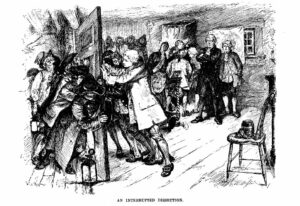
It is important to understand the history behind whole body donations and its link to unclaimed bodies to properly debate on ethics. The first bodies used for medical research and teachings in the United States were actually bodies from executed criminals in the eighteenth century (citation). Due to the fact that there was a high demand for bodies to dissect by students and so few criminal bodies available, school officials and students turned to acquiring deceased bodies by hiring “Resurrection Men” to grave rob the Black community’s cemeteries.7 While the Black community was in outrage of their graves being desecrated, there was no attention shed to the issue by the White majority until a white lady’s body was stolen from Trinity Churchland on February 21, 1778 in New York (citation). This theft led to the white population finally caring about what the medical school and hospitals were doing and started the “Doctor Riots” on April 16 of that same year, ending in the death of 20 or so people and destruction of the entirety of New York Hospital’s anatomical collection. It wasn’t until 1831 that the first anatomy act in the United States was passed in Massachusetts that legalized the use of bodies for dissection and anatomical study.8 In 1903, the Dallas Times Herald noted that “No provisions has been made by the Texas legislature for the supply of material and it is a penal offense in this state to use a dead body for these purposes” yet there were still occasional discoveries of black bodies thought to have originated from the Dallas Medical College within their city limits. By 1941, morticians that held pauper burial contracts in Texas were required to turn over unclaimed bodies for dissection as medical cadavers.9 In 1968 the Uniform Anatomical Gift act was federally passed, allowing for citizens to consent to whole body donation for the purpose of anatomical studies.10 This in turn made the social stigma of having your body used for dissectional instruction go from something that only happened in the middle of the night to those of low backgrounds, to being seen as a courageous and selfless act in order to help society..
One of the issues most prevalent with the topic of donating unclaimed bodies is the issue of consent. When a person is alive and willing to become a whole body donor, there is a notable amount of paperwork to sign along with many different medical programs in which you can partner with such as the Willed Body Program in Fort Worth’s University of North Texas Health Science Center.11 Most of the time, a person cannot even confirm their donation without needing two witnesses to sign with them. The question is, if a living person must follow all these guidelines and have their autonomy respected, why is the same respect not given to an unclaimed cadaver? With the Anatomical Gift act, after the individual has passed, near relatives and other relatives such as adult grandchildren and grandparents can make the decision to donate the individual’s body if prior paperwork was not done while living. Along with these family members, there are four other types of people who can make that decision for the deceased: an agent of the deceased, an adult who exhibited special care for the deceased, persons acting as the guardians of the deceased, and any person having the authority to dispose of the deceased body.12 When relatives make the decision, we as the onlookers must believe that they had their deceased family member’s wishes in their minds as they knew them best. When we delve into the “any person having the authority to dispose of the deceased body” category though, there is doubt of best interest. In Texas, the county commissioners court would have the authority to enact the anatomical gift, an act of which we know occurs in Dallas county.13 Fort Worth’s Tarrant County too has taken advantage of its whole body donation programs and has saved over $500,000 in a three year period.14 One must wonder if counties have the individual’s best interest in mind or if they are seeking the economic relief of not having to offer burial services to unclaimed bodies.
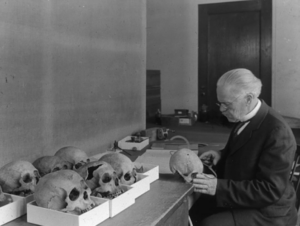
There are a few socio-economic issues to address, starting with the fact that lower-income regions are at higher risk of dealing out unclaimed bodies.15 To claim a body, you must do so with the knowledge that you (and possible family members) will be paying for the entirety of the burial proceedings. If you do not live in a county such as Bexar or El Paso in which the county offers pauper burials, and you cannot afford to pay for the burial on your own, there is a chance in which that Texas county will choose an anatomical gift option instead of a burial. In a study done in Los Angeles, California, 2.37% of all deaths resulted in unclaimed bodies. Of that percentage, African Americans went unclaimed at higher rates than Caucasians and any other racial groups’ deaths.16 Now, delving back into the history of whole body donation and body snatching, it is important to note that African Americans were not the only victims in the ordeal. For centuries, Native American remains have been used in schools and museums as a source of teaching, but for most of that time, those remains were taken without the consent of the respective tribes. As of 1990, there were an estimated 300,000 Native American remains held by repositories in the United States. Advocates fought alongside the Native American tribes for the rights of their ancestral remains, leading to the U.S. Native American Graves Protection and Repatriation Act.17 This act held that all human remains of any ancestry “must at all times be treated with dignity and respect” and moved for any cultural and human remains to be returned to their respective tribe or for an understanding between the tribes and museums to be made.18 The fight for Native American repatriation has still not stopped though. In 1998, UC Berkeley was in contention for refusing to return the 9,000 native skeletons in the school’s collection, on the grounds that there was no specific tribe of California Indians that they could be traced back to.19 More recently in 2021, The School District of Philadelphia found a Native American skeleton in their closet, being back to 1850 and used as a teaching aid. While the school district has since then done their best to return the remains to its tribe, the matter of fact stands that at one point, that skeleton was wrongfully taken without the consent of fellow Native Americans.20
To restate the wording in NAGPRA, human remains must at all times be treated with dignity and respect.21
There have been many instances though, both in the United States and in other countries, in which we are left to wonder exactly where that dignity and respect is meant to be. In 2014, an FBI raid was conducted against the Biological Resource Centre in Arizona and found that the center was illegally selling body parts, one donated body being used by the military to test bombs. In another situation, an ex-veteran’s body was donated to Med Ed Labs in Las Vegas which then sold the body for $10,000 and was used for a dissection class in a hotel ballroom with a $500 entrance fee. In September of 2022, a lady who had been told her father’s body was being used to train medical students and even had his ashes returned found that her father’s body had in reality been dumped in a remote Arizona forest.22 In all of the cases above, the deceased individual had either given consent themselves or had consent given by their family. In the human cadaver exhibition, BODIES… The Exhibition, all of the cadavers are unclaimed bodies from China. While BODIES’s competitor, Body Worlds, claims all of their bodies were donated and completely legal, they have also chosen to not reveal any information of the individuals or any paperwork regarding their donations.23 These two exhibitions have caused tremendous controversy, with many people wanting for them to be shut down due to the believed disrespect shown to the displayed bodies. Whether the body was donated with or without consent, the manner in which these bodies are being treated in the name of science is not in content with the amount justice and respect they deserve.
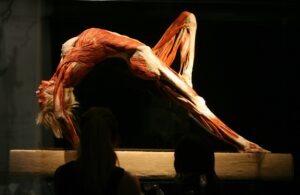
In 2012, the International Federation of Associations of Anatomists recommended that only donated bodies be used for anatomy teaching and research. In North America, while the United States uses mostly body donations, Canada uses exclusively body donations, Mexico uses mostly unclaimed bodies, and Nicaragua uses exclusively unclaimed bodies.24 There is no global standard as to what is acceptable and what is ethical. There is also no shared agreement as to when remains turn from being part of an individual to being an artifact to be used for teaching. In the United States, it is up to each state to set their own rules on whole body donations, and in Texas, it is up to each individual county to decide what to do with their unclaimed bodies.25 We are in a unique setting in which we can directly influence our local laws and regulations. Using unclaimed bodies for research may be beneficial in making medical advancements, but it is unethical as it majorly prays on low income regions, hold issues with the individual’s consent, and has no way to guarantee that the dignity and respect of the individual is being upheld.
- “What Happens When You Donate Your Body to Science | MIT Technology Review.” n.d. Accessed March 12, 2023. https://www.technologyreview.com/2022/10/12/1060924/donating-your-body-science-body-farm/. ↵
- Habicht, Juri L., Claudia Kiessling, and Andreas Winkelmann. 2018. “Bodies for Anatomy Education in Medical Schools: An Overview of the Sources of Cadavers Worldwide.” Academic Medicine 93 (9): 1293–1300. ↵
- Mou, Stephanie Yiyan. n.d. “DISSECTING THE ISSUE OF UNCLAIMED BODIES IN MEDICAL EDUCATION.”. ↵
- “HEALTH AND SAFETY CODE CHAPTER 691. ANATOMICAL BOARD OF THE STATE OF TEXAS.” n.d. Accessed March 7, 2023. https://statutes.capitol.texas.gov/Docs/HS/htm/HS.691.htm. ↵
- “Pauper Burial Assistance | Bexar County, TX – Official Website.” n.d. Accessed March 12, 2023. https://www.bexar.org/3571/Pauper-Burial-Assistance. ↵
- “In Texas, the Cadavers of the Poor Are Used to Advance Medical Science, without Their Consent.” 2021. Dallas News. December 14, 2021. https://www.dallasnews.com/opinion/commentary/2021/12/14/in-texas-the-cadavers-of-the-poor-are-used-to-advance-medical-science-without-their-consent/. ↵
- Meier, Allison. 2018. “Grave Robbing, Black Cemeteries, and the American Medical School.” JSTOR Daily. August 24, 2018. https://daily.jstor.org/grave-robbing-black-cemeteries-and-the-american-medical-school/. ↵
- Magazine, Smithsonian, and Bess Lovejoy. n.d. “The Gory New York City Riot That Shaped American Medicine.” Smithsonian Magazine. Accessed March 8, 2023. https://www.smithsonianmag.com/history/gory-new-york-city-riot-shaped-american-medicine-180951766/. ↵
- Davidson, James M. 2007. “‘Resurrection Men’ in Dallas: The Illegal Use of Black Bodies as Medical Cadavers (1900—1907).” International Journal of Historical Archaeology 11 (3): 193–220. ↵
- “Uniform Anatomical Gift Act.” n.d. LII / Legal Information Institute. Accessed March 12, 2023. https://www.law.cornell.edu/wex/uniform_anatomical_gift_act. ↵
- Allison, Alexis. 2022. “Cadavers Help Students Prepare for Professions in Medicine. But Some Are Donated without Consent.” Fort Worth Report. April 3, 2022. http://fortworthreport.org/2022/04/03/cadavers-help-students-prepare-for-professions-in-medicine-but-some-are-donated-without-consent/. ↵
- Rajasekhar, S.S.S.N, K. Aravindhan, V. Gladwin, and Parkash Chand. 2016. “Body Donation- Consent from Non-Related Persons: Case Series, Review, and Recommendations.” Journal of Clinical and Diagnostic Research : JCDR 10 (9): AR01–4. https://doi.org/10.7860/JCDR/2016/22667.8507. ↵
- “In Texas, the Cadavers of the Poor Are Used to Advance Medical Science, without Their Consent.” 2021. Dallas News. December 14, 2021. https://www.dallasnews.com/opinion/commentary/2021/12/14/in-texas-the-cadavers-of-the-poor-are-used-to-advance-medical-science-without-their-consent/. ↵
- Allison, Alexis. 2022. “Cadavers Help Students Prepare for Professions in Medicine. But Some Are Donated without Consent.” Fort Worth Report. April 3, 2022. http://fortworthreport.org/2022/04/03/cadavers-help-students-prepare-for-professions-in-medicine-but-some-are-donated-without-consent/. ↵
- Jones, D. Gareth, and Maja I. Whitaker. 2012. “Anatomy’s Use of Unclaimed Bodies.” Clinical Anatomy 25 (2): 246–54. https://doi.org/10.1002/ca.21223. ↵
- Sohn, Heeju, Stefan Timmermans, and Pamela J. Prickett. 2020. “Loneliness in Life and in Death? Social and Demographic Patterns of Unclaimed Deaths.” PLoS ONE 15 (9): e0238348. https://doi.org/10.1371/journal.pone.0238348. ↵
- “Native American – Repatriation and the Disposition of the Dead | Britannica.” n.d. Accessed March 12, 2023. https://www.britannica.com/topic/Native-American/Repatriation-and-the-disposition-of-the-dead. ↵
- “Native American Graves Protection and Repatriation Act (U.S. National Park Service).” n.d. Accessed March 12, 2023. https://www.nps.gov/subjects/nagpra/index.htm. ↵
- Curtius, Mary. 1998. “Indian Remains Are Bones of Contention at Berkeley.” Los Angeles Times. April 27, 1998. https://www.latimes.com/archives/la-xpm-1998-apr-27-mn-43487-story.html. ↵
- Vlamis, Kelsey. n.d. “A Philadelphia School Will Return the Skeletal Remains of a Native American Man That Were Discovered in a Classroom Closet.” Insider. Accessed February 15, 2023. https://www.insider.com/school-to-return-remains-native-american-man-found-in-classroom-2021-10. ↵
- “Native American Graves Protection and Repatriation Act (U.S. National Park Service).” n.d. Accessed March 12, 2023. https://www.nps.gov/subjects/nagpra/index.htm. ↵
- “When Donating Your Body to Science Goes Wrong.” n.d. Discover Magazine. Accessed March 12, 2023. https://www.discovermagazine.com/the-sciences/when-donating-your-body-to-science-goes-wrong. ↵
- Ulaby, Neda. 2006. “Origins of Exhibited Cadavers Questioned.” NPR, August 11, 2006, sec. Science. https://www.npr.org/2006/08/11/5637687/origins-of-exhibited-cadavers-questioned. ↵
- Habicht, Juri L., Claudia Kiessling, and Andreas Winkelmann. 2018. “Bodies for Anatomy Education in Medical Schools: An Overview of the Sources of Cadavers Worldwide.” Academic Medicine 93 (9): 1293–1300. ↵
- “HEALTH AND SAFETY CODE CHAPTER 691. ANATOMICAL BOARD OF THE STATE OF TEXAS.” n.d. Accessed March 7, 2023. https://statutes.capitol.texas.gov/Docs/HS/htm/HS.691.htm. ↵

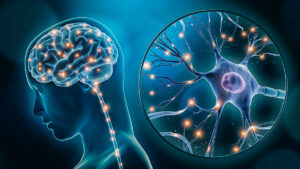
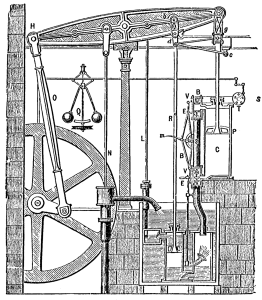
24 comments
Maximillian Morise
This is a very interesting article regarding an intriguing ethical dilemma that many often do not think or talk about, and I congratulate the author for bringing it to light and discussing it in depth. Additionally, congratulations on your nomination!
Gabriella Parra
Vanessa! Congratulations on your nomination! Immediately upon reading the title of your article, I was very interested. My first thought is that, without knowing the identity or customs of a person, we can’t know if they would have wanted their bodies to be donated to science, so I’m glad you brought this up. Also, I enjoyed learning about the history of donating bodies to science. Great job!
Alanna Hernandez
There is a common trope amongst people who refuse to be donors as they feel that if they were to get into a car accident, the hospital would not save them as a way to harvest their organs. I think your paragraph about the origin of body donations can explain why that chop exist and even further addresses, white people of color are more susceptible to that. Such a cool topic to look into. Congratulations.
Karah Renfroe
Congrats on the nomination! I did not previously know much about this topic, so this was really eye-opening for me to read and learn about. I actually plan to research more on the topic after reading this article. This article made me a bit sad and truly made me question the ethics of donating unclaimed bodies. I believe in bodily autonomy and this does not seem to fall within that framework of thinking, leading me to feel that this practice is unethical. On the flip side, you can see the potential benefits, however personally I do not feel that this is necessarily the right approach. I like how detailed of the article is and the references used. I also think it is very important and note-worthy to mention the socioeconomic aspect of this issue discussed as well in this article, it really added to the overall discussion in a more complete way.
Muhammad Hammad Zafar
Really interesting, the three unclaimed ways for body. The first one is strange that the relatives consider it as unclaimed. There is no any specific law and I think there couldn’t be any way of unclaimed bodies to be processed. At the end, the bodies which were sold for $10,000 and then the 500 entrance fee and loved the Gunther von Hagen’s body worlds exhibition,
Osondra Fournier-Colon
It is a terrible shock how unclaimed bodies became used in medical practices, and the history behind them is so disrespectful altogether. However, this article does a great job putting the action of using unclaimed bodies as an unethical act against a deceased individual. The history of grave robbing black cemeteries is just the cherry on top that makes the act heinous.
Nnamdi Onwuzurike
Congratulations on your nomination! This article raises important ethical questions about the donation of unclaimed bodies to science. The author considers the potential benefits of such donations for medical research and education, as well as the potential risks and concerns around consent, privacy, and exploitation. By examining the different perspectives and arguments on the topic, the article highlights the complexity of the issue and the need for thoughtful consideration of the ethical implications of body donation.
Isabella Lopez
I knew that people would donate their bodies to science but I never knew that medical schools would use unclaimed bodies. That’s so eerie. A terrifying thing is that minorities bodies were being used in schools, like Native Americans. Side note, I went to the BODIES exhibit in Las Vegas and that is so weird to think those bodies are unclaimed and I never knew it.
Melanie Fraire
This was a really interesting article to read and I found it shocking how 14% of medical schools have revealed that they use unclaimed bodies since that just doesn’t sit right with me as I’m sure it doesn’t with others. Overall, it was a very well written article and I enjoyed reading the information given.
Sydney Nieto
Congratulations on having your article nominated. I had no clue that so many people had donated their bodies after death. I was also surprised that school would use unclaimed bodies for projects, and that 241 bodies were donated. The fact that the grave was being dug up from black communities in the 18 century’s is sad and a bit too far.